Recorrido por el Centro de La Habana. El Parque Central y la Fuente de La India (ENG-ESP)//Tour of Central Havana. The Central Park and the Fountain of India (ENG-ESP)
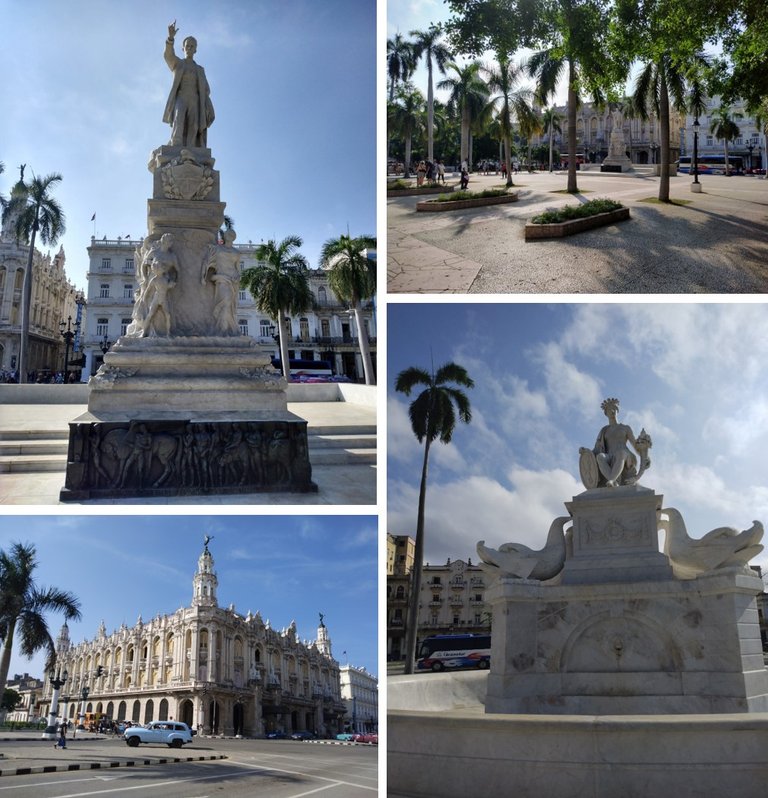
English Version
Hello, dear @Pinmapple community. First of all, I would like to wish you a Happy New Year! This time I want to share with you some pictures of my tour through the centre of Havana where we will learn about the history of some emblematic places like the Central Park and the Fountain of India. I hope you like it. Best regards.
Located in the limits of the historical centre of the city, we find the well known Park Central, a meeting and recreation place for locals and foreign visitors alike. It occupies a whole block with an area of 10,000 square metres and is bounded by Neptuno Street to the north, San José Street to the south, Paseo de Martí (Paseo del Prado) to the west and Agramonte (Zulueta) to the east.
It was founded in the year 1877, after the walls that limited the city at that time and protected it from the attacks of corsairs and pirates were demolished. The purpose of its construction was to serve as a public square and recreational area. Throughout its history it has been a bastion of demonstrations and revolutionary acts. The 28 royal palms, the national tree, stand out in the square, alluding to the birth of José Martí, Cuba's national apostle. There are also 8 planters on the ground in the shape of tombs in commemoration of the medical students who were cruelly shot on November 27th, 1871. On the margins of the park there are several marble benches where passers-by can stop to rest their feet and enjoy the fresh air and the urban landscape of Havana.
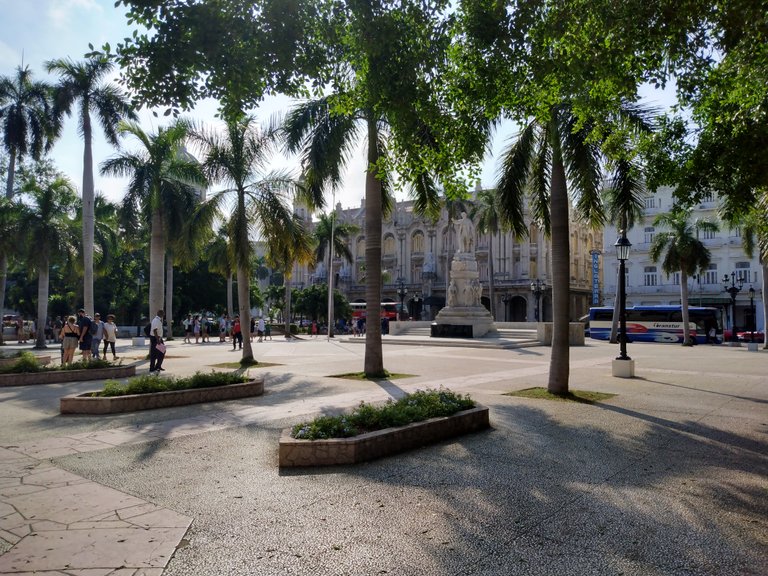
Right in the centre of the park there is a statue of José Martí, founded in 1905, the first sculpture in honour of the Cuban Apostle. It was made of Carrara marble by the Cuban sculptor José Villata de Saavedra; the monument is characterised by a pyramidal structure at the base of which there is a high relief carved in bronze representing the Cuban people led by Victory, further up is the statue of Martí, standing with his hand raised and addressing the people.
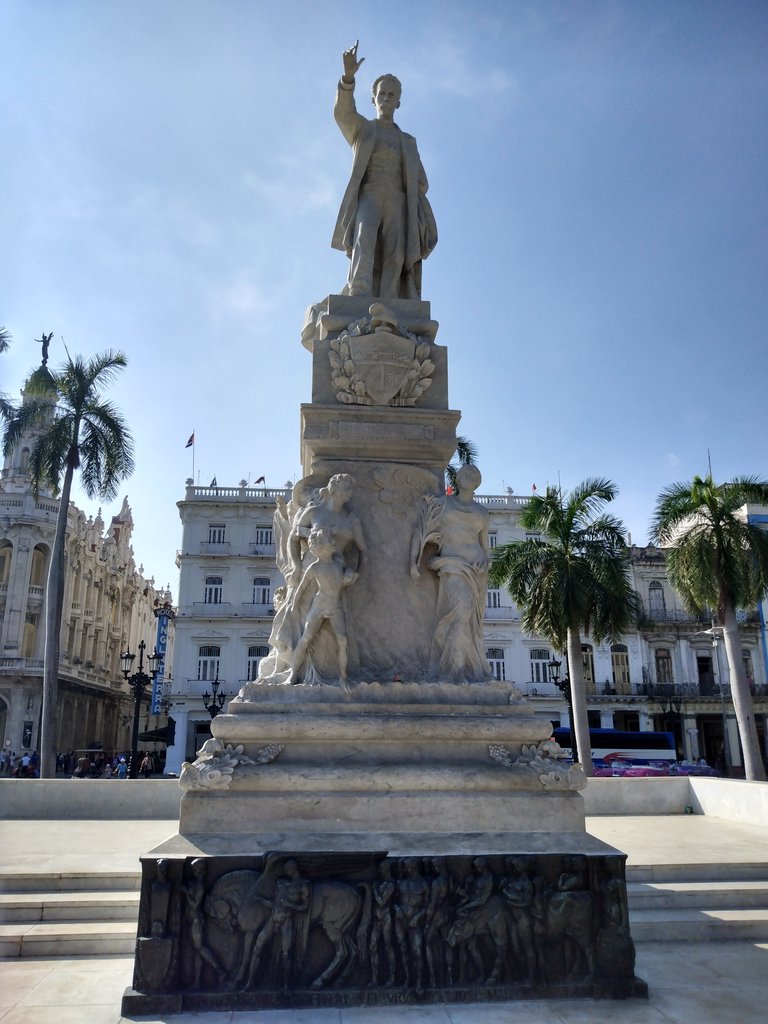
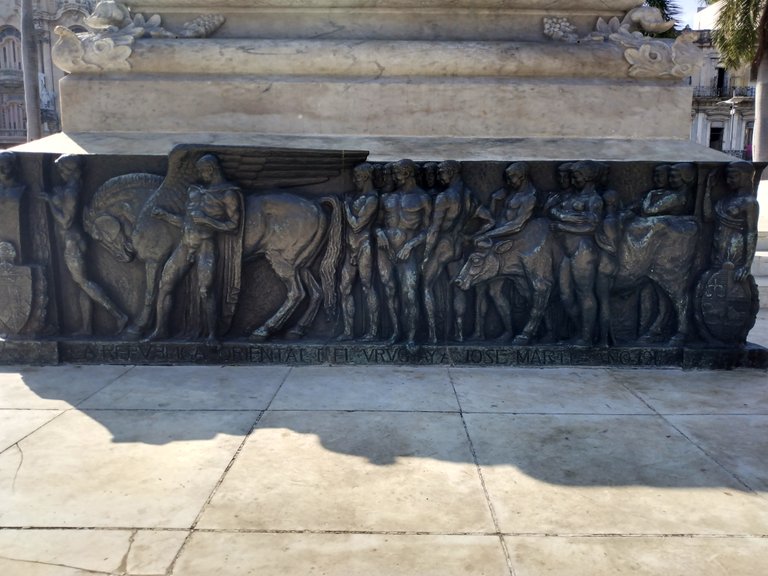
In the surroundings of the Central Park we can appreciate beautiful architectural works such as the Gran Teatro de La Habana Alicia Alonso, the Museum of Fine Arts; and the Plaza, Gran Manzana Kempinski and Iberostar Parque Central hotels.
The Gran Teatro de La Habana Alicia Alonso. One of the great icons of the city and home to the National Ballet of Cuba.
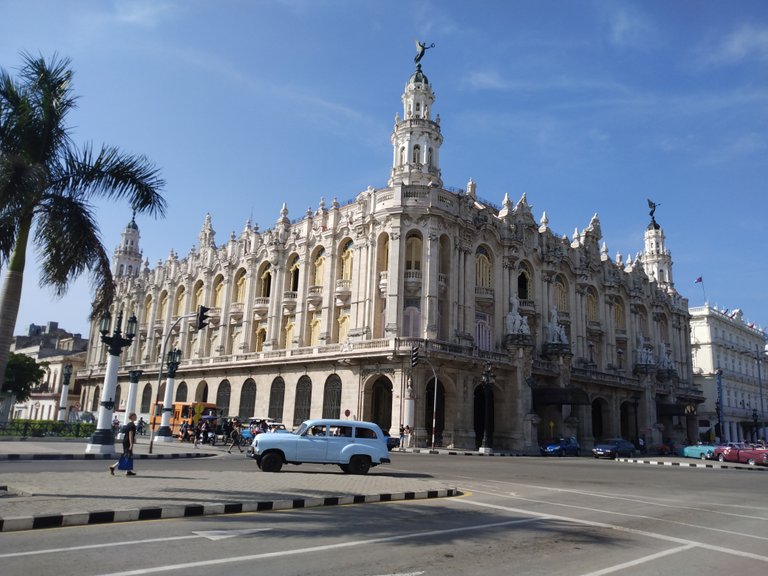
Building of the Museum of Fine Arts (Universal Art). A place where you can find works of art by world-renowned foreign artists.
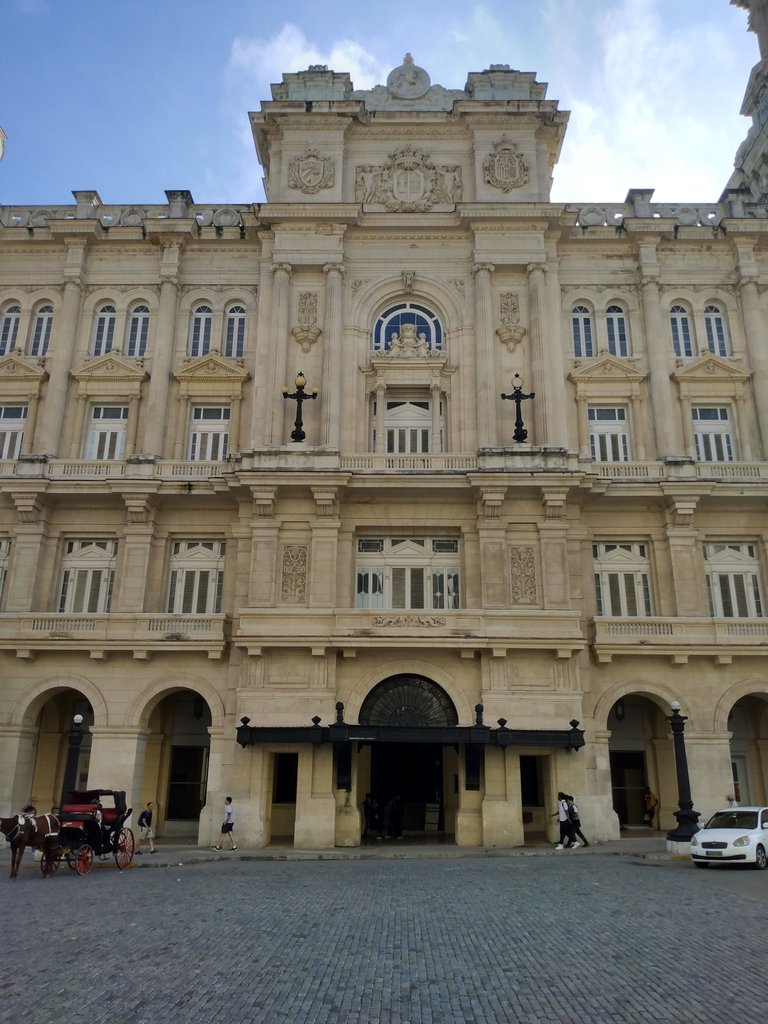
Hotel Plaza with its imposing classical architecture.
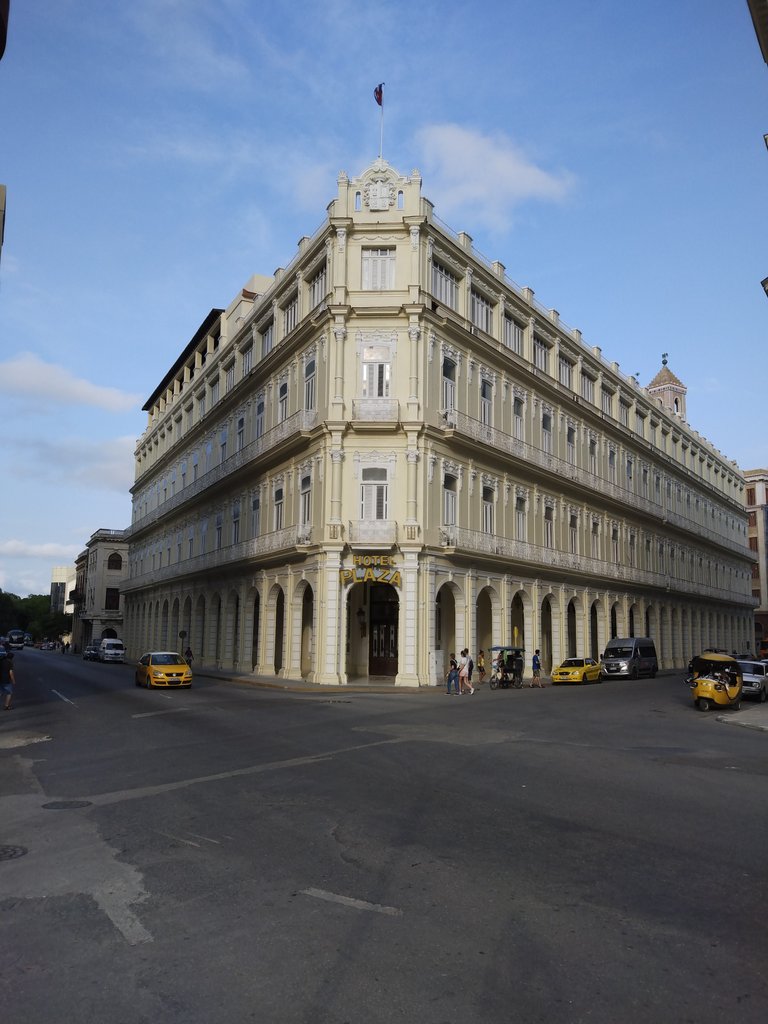
The Gran Manzana Kempinski Hotel, Havana's first luxury hotel.
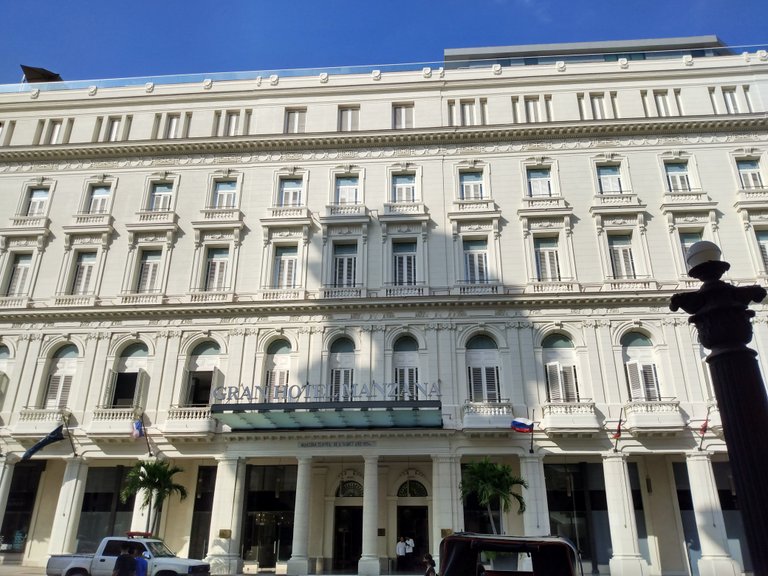
The modern Hotel Iberostar Central Park offers beautiful and panoramic views of Havana.
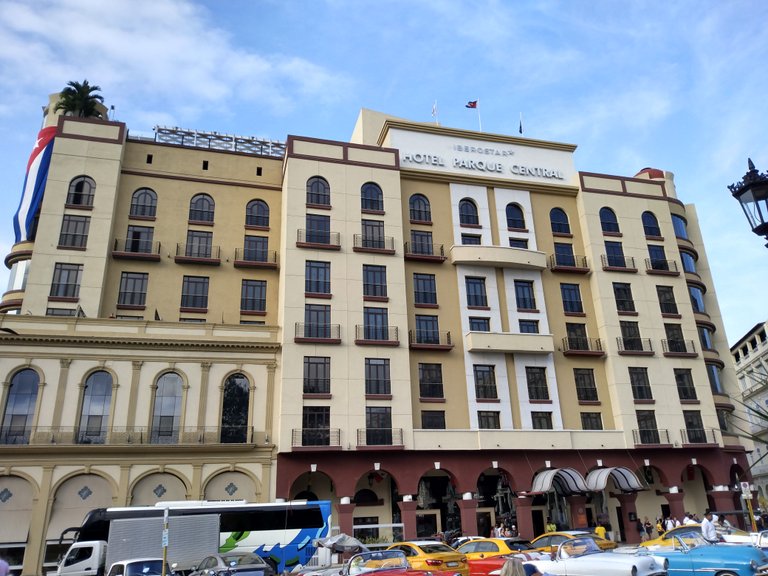
The Fountain of India is located about 200m south of the Central Park. The idea for its construction was conceived by the Count of Villanueva who commissioned the work to the prestigious Italian sculptor Giuseppe Gaggini, the same who built other fountains in Havana. Founded in 1837 and built in marble, it is inspired by the legend of the beautiful aboriginal ''Habana'' that welcomed the Spanish navigators during their voyage to the island. According to the legend, when the Spanish conquistadors arrived at the current port of the capital, they met an Indian woman who approached them silently and made circular gestures with her hands pointing to the bay and the virgin mountain while pronouncing the word Havana. It is thought that this is where the city got its name. The fountain consists of a statue of a seated woman wearing a crown of feathers and holding a quiver of arrows on her left shoulder; in her right hand she holds the city's coat of arms and in her left hand she holds a cornucopia of fruit topped by a pineapple. Around the statue are four dolphins from which water flows. On the pedestal there is a large shell, in the centre of which is a high relief of a lion's head, from the mouth of which a stream of water is spurting out.

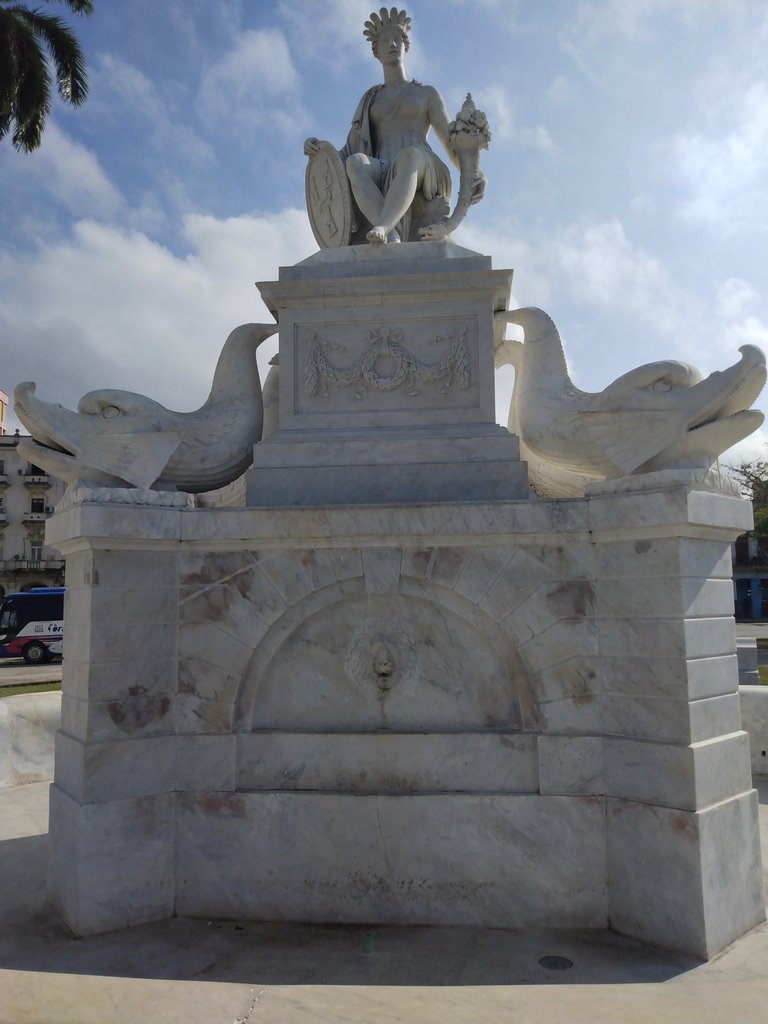
Thank you for your time and support for our work. See you on the next tour.
All images are my property, taken with my MOTO G PLAY (2021) cell phone.
Translated at DeepL
Versión en Español
Hola, estimada comunidad de @Pinmapple. Ante todo, desearles un Feliz año nuevo!! En esta ocasión les quiero compartir imágenes de mi recorrido por el Centro de La Habana donde, conoceremos la historia de algunos sitios emblemáticos como el Parque Central y la Fuente de La India. Espero les guste. Saludos cordiales.
Ubicado en los límites del casco histórico de la ciudad nos encontramos con el reconocido Parque Central, sitio de encuentro y esparcimiento tanto para lugareños como visitantes foráneos. Ocupa toda una manzana con un área de 10000 metros cuadrados y limitado por las calles Neptuno por el norte, San José por el sur, Paseo de Martí (Paseo del Prado) por el oeste y Agramonte (Zulueta) por el este.
Fue fundado en el año 1877, después que fueron derribadas las murallas que limitaban a la ciudad en aquel entonces y la protegían de los ataques de corsarios y piratas. Su construcción tuvo como finalidad la de servir como plaza pública y sitio de esparcimiento. A lo largo de su historia ha sido baluarte de manifestaciones y actos revolucionarios. En el destacan las 28 palmas reales, árbol nacional y que hacen alusión al natalicio de José Martí, Apóstol nacional de Cuba. También se observan en el piso 8 jardineras con forma de tumbas en conmemoración a los estudiantes de Medicina que fueron fusilados cruelmente el 27 de noviembre de 1871. En los márgenes del parque se encuentran varios bancos en mármol donde los transeúntes pueden hacer una parada en su recorrido para descansar los pies y disfrutar del aire puro y el paisaje urbanístico de La Habana.
Justo en el centro del parque se encuentra una estatua de José Martí, fundada en 1905, constituye la primera escultura que se en honor al Apóstol cubano. Fue elaborada en mármol de Carrara por el escultor cubano José Villata de Saavedra; el monumento se caracteriza por una estructura piramidal en cuya base se encuentra un altorrelieve tallado en bronce que representa al pueblo cubano conducidos por la Victoria, más arriba se encuentra la estatua de Martí, de pie, con la mano en alto dirigiéndose al pueblo.
En los alrededores del Parque Central podemos apreciar hermosas obras arquitectónicas como el Gran Teatro de La Habana Alicia Alonso, el Museo de Bellas Artes; y los hoteles Plaza, Gran Manzana Kempinski e Iberostar Parque Central.
El Gran Teatro de La Habana Alicia Alonso. Uno de los grandes íconos de la ciudad y sede del Ballet Nacional de Cuba.
Edificio del Museo de Bellas Artes (Arte Universal). Sitio donde se encuentran obras de arte de artístas plásticos foráneos reconocidos a nivel mundial.
Hotel Plaza con su imponente arquitectura de estilo clásico.
El Hotel Gran Manzana Kempinski, el primer hotel de lujo de La Habana.
El moderno Hotel Iberostar Parque Central desde donde se disfrutan hermosas y panorámicas vistas de La Habana.
La Fuente de la India se encuentra ubicada a unos 200m al sur del Parque Central. La idea de su construcción fue concebida por el Conde de Villanueva quien encargó la obra al prestigioso escultor italiano Giuseppe Gaggini, el mismo que construyó otras fuentes de La Habana. Fundada en el año 1837 y construida en mármol, se inspira en la leyenda de la hermosa aborigen ´´Habana´´ que recibió a los navegantes españoles durante su bojeo a la isla. Según cuenta la leyenda al llegar los conquistadores españoles al actual puerto de la capital, se encontraron con una india que se le acercó en silencio y les hizo gestos circulares con las manos señalándoles la bahía y el monte virgen mientras, pronunciaba la palabra habana. De ahí se piensa que la ciudad tomó su nombre. La fuente consiste en la estatua de una mujer sentada que porta una corona de plumas y una aljaba con flechas en su hombro izquierdo; en su mano derecha sostiene el escudo de la ciudad y en su mano izquierda sustenta una cornucopia con frutas coronadas por una piña. Alrededor de la estatua se encuentran cuatro delfines de donde fluye agua. En el pedestal se presenta una gran concha en cuyo entro se ubica el altorrelieve de la cabeza de un león desde cuya boca sale un chorrillo de agua.
Gracias por su tiempo y apoyo a nuestro trabajo. Nos vemos en la próxima gira.
Todas las imágenes son de mi propiedad, tomadas con mi teléfono móvil MOTO G PLAY (2021).
Traducido en DeepL
Congratulations, your post has been added to Pinmapple! 🎉🥳🍍
Did you know you have your own profile map?
And every post has their own map too!
Want to have your post on the map too?
Thanks Pinmaple for your vote, is an honor for me. Happy New Year!!
Congratulations @reneyasmany! You have completed the following achievement on the Hive blockchain And have been rewarded with New badge(s)
Your next target is to reach 80 posts.
You can view your badges on your board and compare yourself to others in the Ranking
If you no longer want to receive notifications, reply to this comment with the word
STOPTo support your work, I also upvoted your post!
Check out our last posts:
Thanks very much hivebuzz for your support and vote. Happy New Year!!
You're welcome @reneyasmany! The HiveBuzz team wishes you all the best for 2024! Have a Happy New Year ✨🥂✨
😊 thanks!
The architectural buildings there are very well detailed and it is so beautiful. Greetings and a Happy New Year 🎆 @reneyasmany
Thanks very much John for your comment. Yes, you are right, beautiful building in the Havana. Happy New Year 2024!!
Happy meeting you here🤗 have a good day!
Thanks friend. Good day for you too